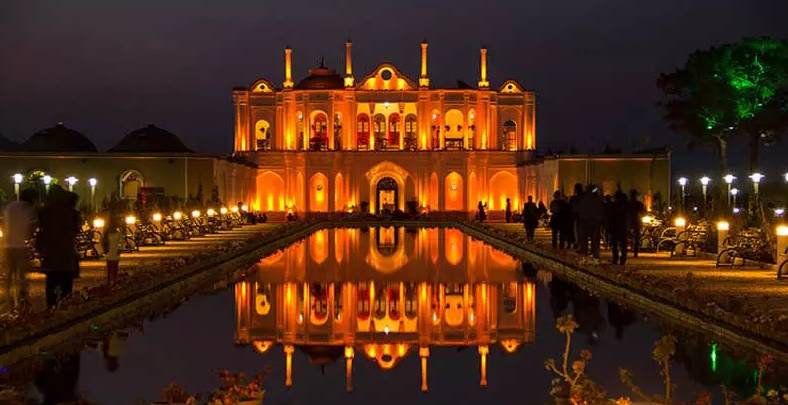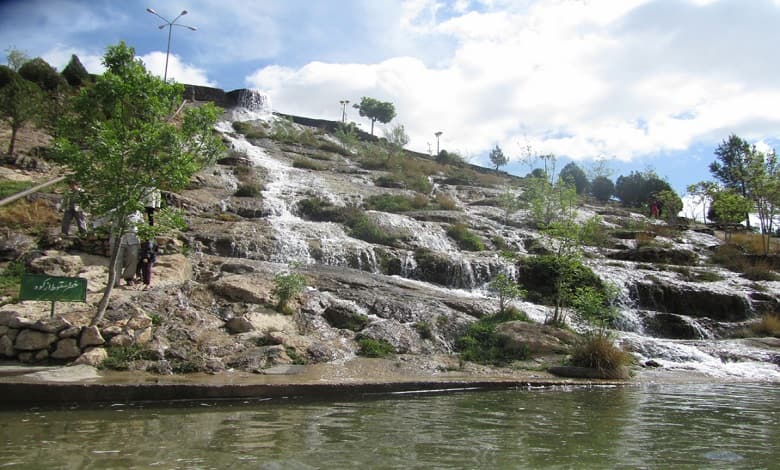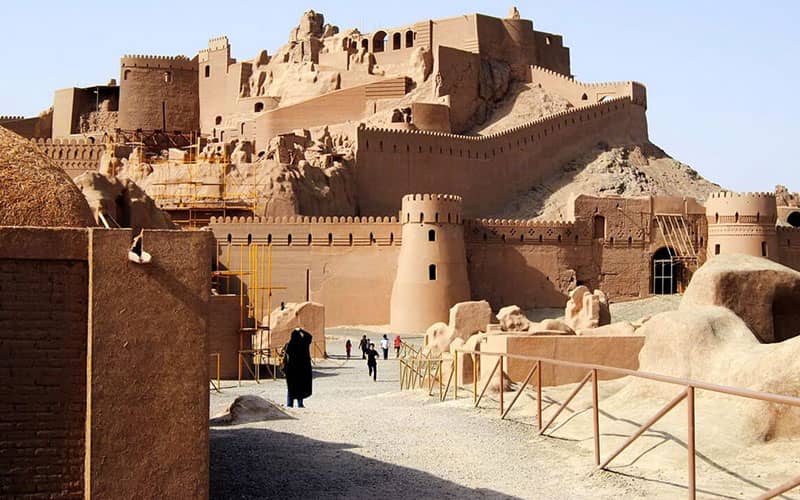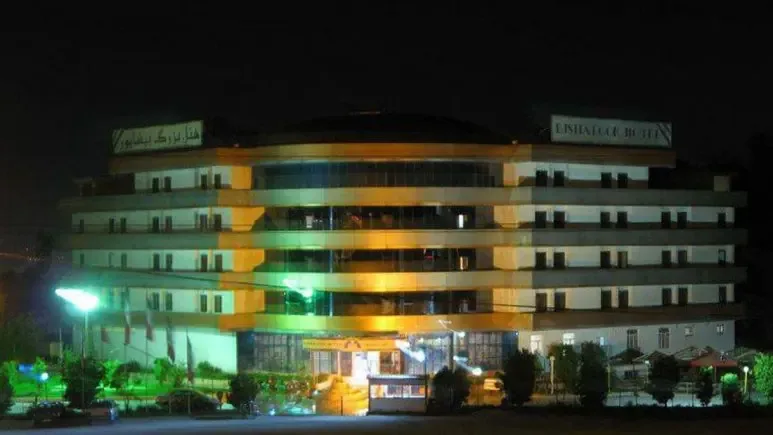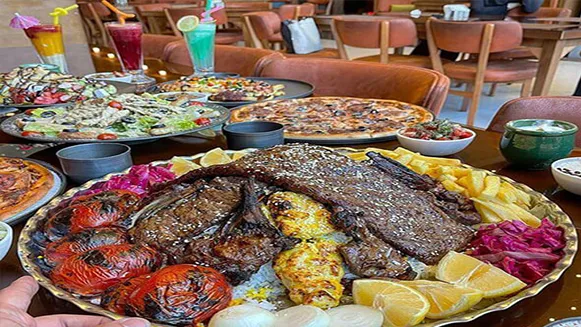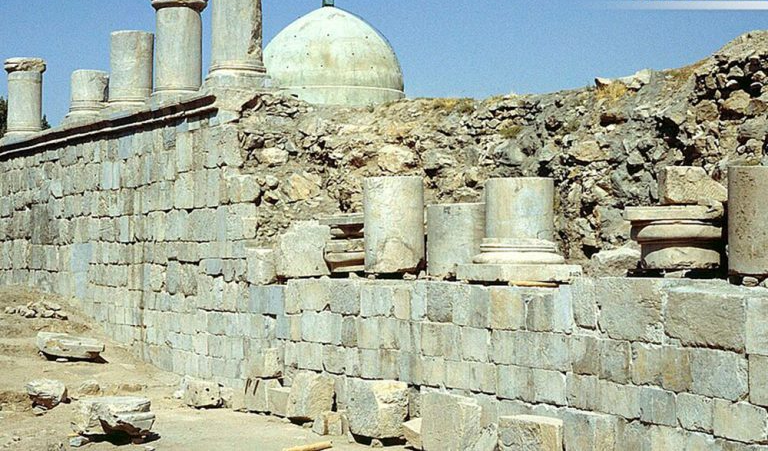Travel guide to Lorestan | Lorestan Iran A Hidden Gem Awaits
Lorestan, a province in western Iran, remains largely undiscovered, preserving its untouched beauty. Traditional attire, vibrant folk dances, local handicrafts, and delectable home-cooked meals, coupled with historical and recreational attractions, promise an unforgettable travel experience.
Often overlooked by tourists, Lorestan’s hidden gems deserve to be unveiled. This guide, crafted by Gulf City Pedia, will meticulously guide you through planning your Lorestan adventure. Prepare to embark on a journey steeped in rich traditions and breathtaking landscapes.
Key Points:
Lorestan, an undiscovered treasure trove in western Iran, offers a unique blend of culture, history, and natural beauty.
Immerse yourself in the province’s vibrant traditions, from colorful attire and lively dances to delectable local cuisine.
Explore ancient historical sites and indulge in recreational activities amidst stunning landscapes.
This comprehensive guide will equip you with everything you need to plan an unforgettable Lorestan adventure.
Geographical Characteristics of Lorestan
Nestled in western Iran, Lorestan province boasts an expansive area of approximately 28,294 square kilometers. According to the latest census, its population is around 1.4 million. Lorestan’s allure lies in its majestic mountains, pristine springs, cascading waterfalls, and renowned oak forests, particularly captivating for nature enthusiasts.
This comprehensive travel guide to Lorestan aims to provide you with valuable insights into the province. Let’s delve into the heart of this captivating region. Lorestan enjoys a Mediterranean climate, characterized by four distinct seasons. The province’s charm extends beyond its scenic wonders; it is also home to a rich tapestry of historical attractions, deeply rooted in the annals of human civilization.
Prominent among Lorestan’s cities and landmarks are Khorramabad (the provincial capital), Pol-e Dokhtar, Borujerd, and Aligudarz, names that undoubtedly resonate with familiarity. Lorestan shares its borders with seven neighboring provinces: Hamedan to the north, Markazi to the northeast, Kermanshah to the northwest, Ilam to the west, Isfahan to the east, Chaharmahal and Bakhtiari to the southeast, and Khuzestan to the south. Envision Lorestan as a captivating gem surrounded by seven diverse provinces, each with its unique climate and character.
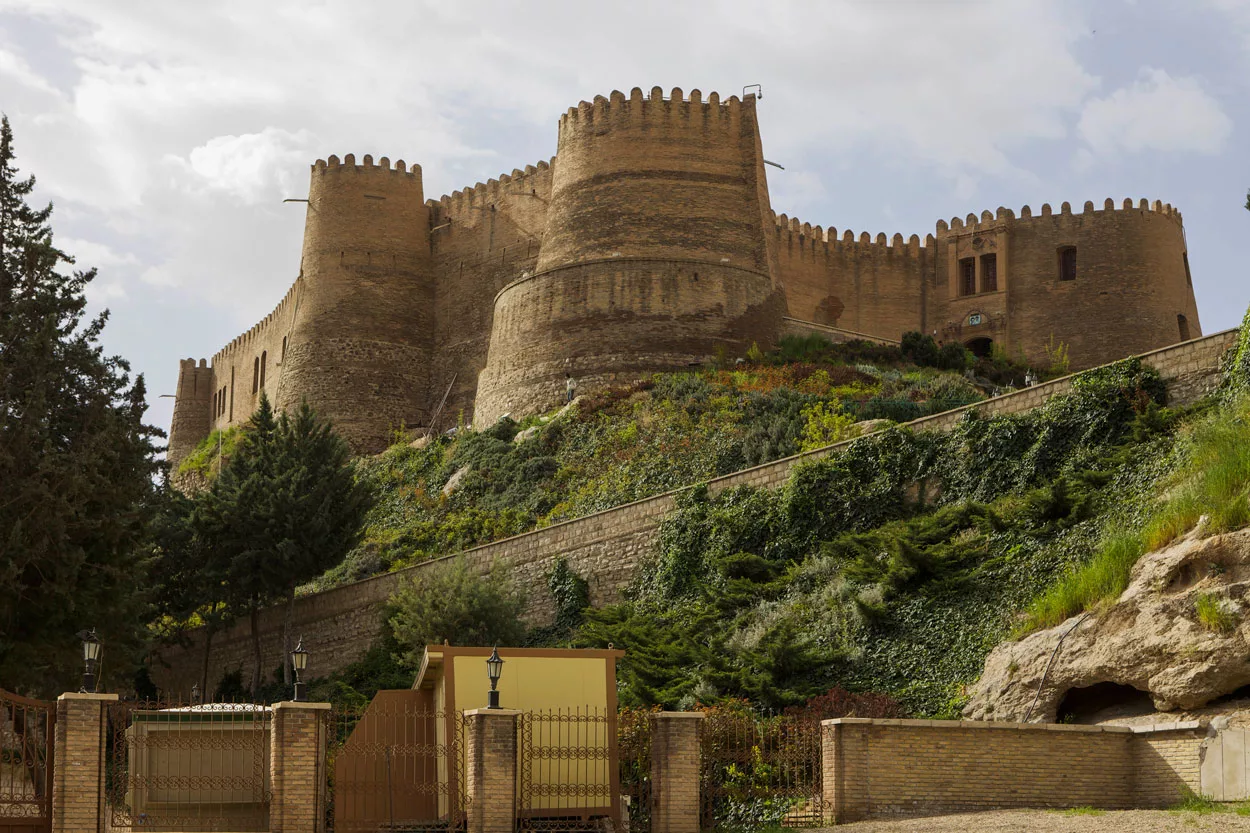
A Glimpse into Lorestan’s Rich History and Diverse Climate
A Historical Tapestry
Before embarking on your Lorestan adventure, let’s delve into the province’s captivating history. Lorestan holds the distinction of being the only Iranian province with a dedicated section in the National Museum of Iran, showcasing artifacts spanning from the Paleolithic to the Neolithic eras. These relics serve as tangible testaments to the long-standing human presence in this region. Among the most renowned historical sites is Kani Kuh Cave in Khorramabad, which has yielded a wealth of archaeological treasures.
Expert analysis suggests that Lorestan’s history stretches back an astounding 40,000 years, a testament to its enduring legacy. The province was home to thriving civilizations of the Lullubis, Elamites, and Kamys prior to the arrival of the Medes. Evidence of Elam-Assyrian civilization has also been unearthed in Kelmakareh. Lorestan’s historical significance is further underscored by its status as the third Achaemenid state, following Elam and Khuzestan.
A Realm of Diverse Climates
Iran’s pride lies in its four distinct seasons, and Lorestan epitomizes this climatic diversity. The province’s geographical expanse encompasses a variety of microclimates, as evident in its diverse array of tourist attractions. Prepare to be amazed by the sheer contrast between the snow-capped peaks of northern Lorestan and the balmy breezes of the southern regions. This remarkable climatic variation is attributed to the province’s unique topography, featuring three distinct climate zones: cold mountainous, temperate central, and warm southern.
Lorestan, blessed with abundant rainfall, ranks as the third most precipitation-rich province in Iran, after Gilan and Mazandaran. Its mountainous terrain, shaped by the majestic Zagros Range, further enhances its natural beauty. The combination of abundant rainfall, a mountainous landscape, towering peaks, a temperate climate, and lush oak forests paints Lorestan as a captivating bride adorned with nature’s finest artistry.
Best Time to Visit Lorestan and Transportation Options
Embark on a Journey Through Time
Lorestan’s captivating charm lies in its diverse climates, allowing you to experience the beauty of each season. Carefully select your destination to align with your desired weather conditions. Considering the province’s predominantly temperate and cool climate, spring, particularly May, is the most recommended time to visit.
Embrace the Vibrant Spring
Be prepared for crowds, as many travelers seek to bask in Lorestan’s splendor during this ideal season. If you prefer a more tranquil experience, consider visiting during the summer months. Keep in mind that southern Lorestan experiences relatively warm temperatures, making it a suitable destination even in autumn.
Navigating Lorestan: Transportation Options
Public Transportation:
While Lorestan currently lacks a metro system, plans are underway to introduce a monorail, potentially transforming the travel experience. Within major cities like Khorramabad, bus stations operate, connecting passengers to various destinations. Taxis offer a more convenient and time-efficient option. Designated taxi routes serve popular tourist attractions and key locations throughout the province.
Personal Vehicle:
Exploring Lorestan by personal vehicle provides flexibility and convenience. Utilize navigation tools to guide your journey, but be mindful of traffic patterns. Early mornings and evenings tend to witness increased congestion.
Transportation Options Summary:
Monorail (under development)
Buses (within major cities)
Taxis (widely available)
Personal vehicles (recommended for flexibility)
Additional Tips:
Plan your itinerary carefully, considering seasonal variations and weather conditions.
Book accommodations in advance, especially during peak seasons.
Familiarize yourself with local customs and etiquette.
Embrace the warmth and hospitality of the Lorestani people.
Remember, Lorestan awaits with open arms, ready to unveil its treasures and create unforgettable memories.
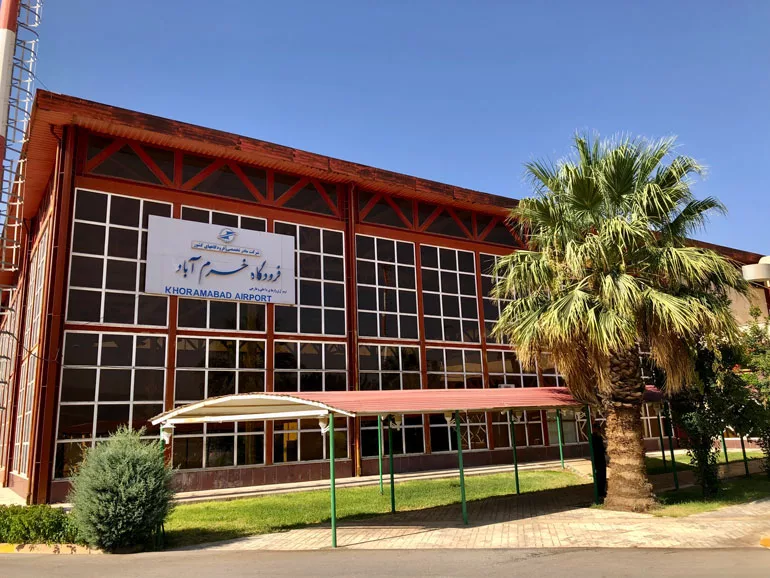
Airports and Terminals in Lorestan
Airports
Lorestan currently has one operational airport:
Khorramabad Airport: Located in the provincial capital, Khorramabad Airport serves as the primary gateway to the region. It offers regular flights to and from major Iranian cities, including Tehran, Isfahan, and Mashhad.
Terminals
Lorestan boasts a network of bus terminals connecting its major cities and towns:
Khorramabad Bus Terminal: The main bus terminal in Khorramabad, offering extensive connections to destinations across Iran.
Aligudarz Bus Terminal: Located in the northwestern part of Lorestan, Aligudarz Bus Terminal serves as a hub for regional transportation.
Borujerd Bus Terminal: Situated in the eastern part of Lorestan, Borujerd Bus Terminal provides connections to cities in central and western Iran.
Railways
Lorestan’s passenger railway line connects the province to other parts of Iran, offering scenic journeys along the way. The “Lorestan Tourism Train” operates on this route, providing a unique travel experience.
Travel Restrictions and Routes in Lorestan
Travel Restrictions
Transportation: While a metro system is not yet available, car rentals, taxis, and buses are the primary modes of transportation.
Airports: Currently, only one airport, Khorramabad Airport, operates in Lorestan.
Accommodation: Suitable accommodations are generally available in major cities, but options may be limited in remote areas.
Travel Routes
Air: Flights to Khorramabad Airport connect the province to major Iranian cities. Upon arrival, onward travel to specific destinations requires further arrangements.
Train: The scenic Lorestan railway line offers a unique travel experience, connecting various towns and cities.
Bus: Buses provide a cost-effective option, with terminals in major cities offering routes across the province.
Personal Vehicle: Self-driving allows for flexibility and stops at scenic locations along the way.
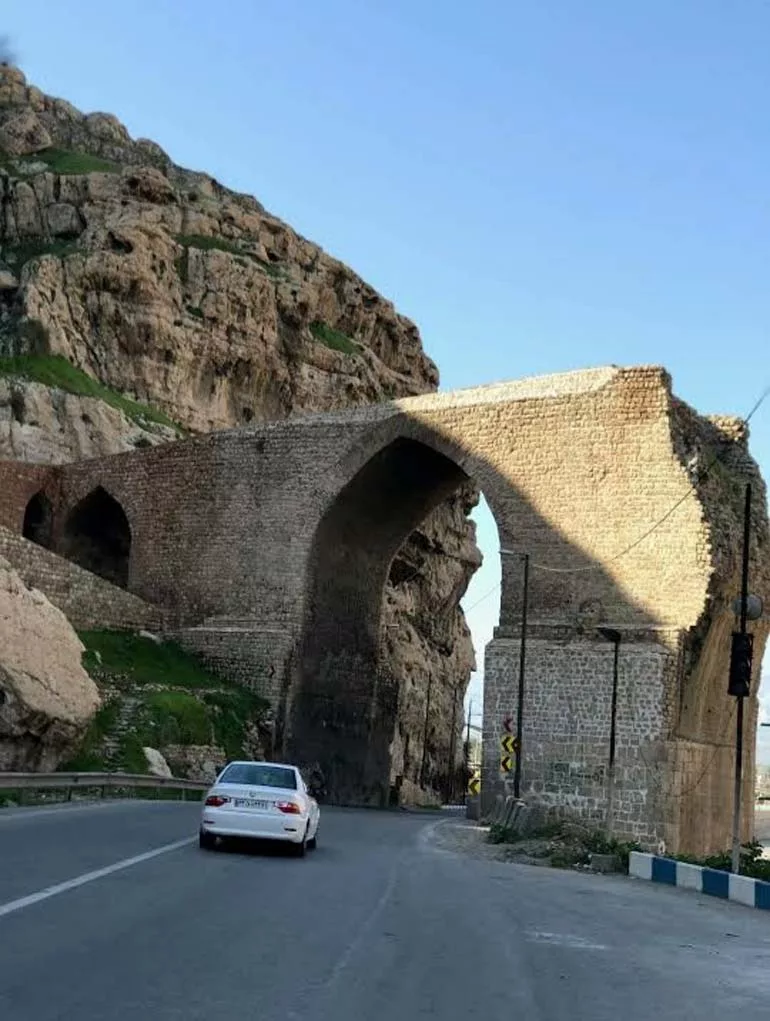
Traveling from Tehran to Lorestan and Nearby Cities
Routes from Tehran to Lorestan:
Shortest Route: This route via Khalije Fars Expressway, Qom-Arak Highway, and Arak-Borujerd-Khorramabad Highway is approximately 487 km long and takes about 5 hours 41 minutes.
Alternate Route: This route via Shahid Qasem Soleimani Expressway, Qom-Arak Highway, and Arak-Borujerd-Khorramabad Highway is approximately 491 km long and takes about 5 hours 50 minutes.
Scenic Route: This route via Shahid Soleimani Expressway, Saveh-Hamedan Expressway, Hamedan-Qahavand Road, Hamedan-Malayer Highway, and Malayer-Borujerd Highway rejoins the second route. It is approximately 549 km long and takes about 6 hours 33 minutes.
Exploring Cities and Villages from Khorramabad:
- borojerd : This mountainous city is located 110 km from Khorramabad and takes about 1 hour 31 minutes to reach by taxi or personal vehicle. En route, visit the historical Zahed Shir Kamalvand Tomb and Gorge and the stunning Narek Spring.
- Aligudarz: Known as the “City of Waterfalls and Upside-down Tulips,” Aligudarz is 125 km from Khorramabad and takes about 1 hour 41 minutes to reach by taxi, intercity bus, or personal vehicle. Admire the cascading waterfalls, the vast expanse of upside-down tulips in Rozestan Plain, and the captivating Poran and Dareh Esfar Waterfalls.
- Doroud: Nestled in the Zagros Mountains, Doroud is a cool city known for its ancient history. It is 87 km from Khorramabad and takes about 52 minutes to reach by taxi or personal vehicle. Explore the prehistoric Teppeh Bastani, marvel at the vast expanse of upside-down tulips in Rozestan Plain, and be mesmerized by the Pوران and Dareh Esfar Waterfalls.
- Poldokhtar: This mountainous city is 114 km from Khorramabad and takes about 1 hour 23 minutes to reach by taxi or personal vehicle. Discover the ancient history of the region by visiting Tepeh Vashian, Gorzur Cemetery, Korafeh, Tang-e Leylam, Chal Kooreh-Heloush, and the captivating Kiyotang Spring.
Key Points:
Plan your route based on your preferred travel time and desired scenery.
Consider the availability of transportation options for each route.
Factor in rest stops and sightseeing opportunities along the way.
Enjoy the diverse landscapes and cultural experiences that Lorestan offers.
Please note: This translation focuses on the main points and omits detailed descriptions and addresses. It aims to provide a concise overview of traveling from Tehran to Lorestan and exploring nearby cities and villages.
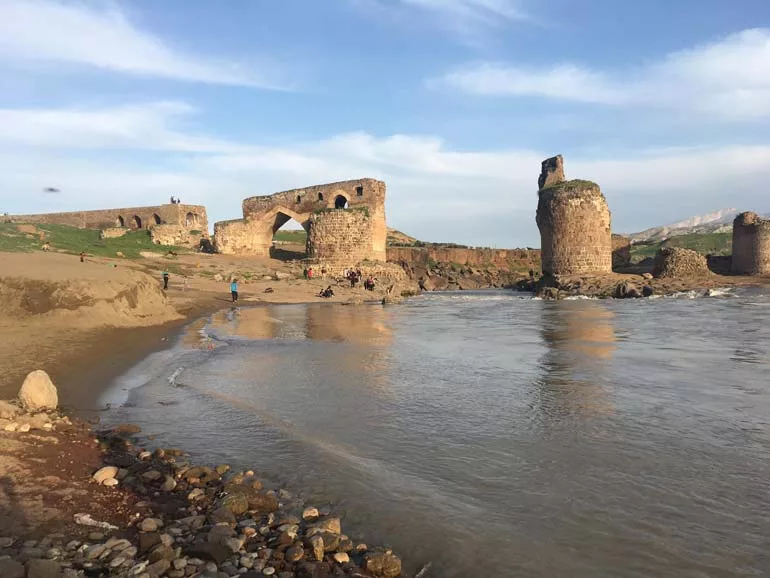
Historical Places in Lorestan
- Teppeh Gorg: This Neolithic site dates back to the 4th and 5th millennia BC. Excavations have revealed artifacts from various periods, including the Parthian era.
- Ghap Bathhouse: Built during the Safavid era, this historic bathhouse is known for its intricate stuccowork, turquoise polygonal pools, and beautiful ceiling decorations.
- Falak-ol-Aflak Castle: This imposing Sassanian fortress is the most iconic landmark in Lorestan. It features well-preserved brickwork and offers stunning views of the city.
- Khorramabad Museum of Archaeology: This museum houses a collection of artifacts from Lorestan’s rich history, including Stone Age tools, pottery, and bronze objects.
- Lorestan Museum of Anthropology: Located within the Falak-ol-Aflak Castle complex, this museum showcases the traditional lifestyles and customs of the Luri people.
Natural Attractions in Lorestan
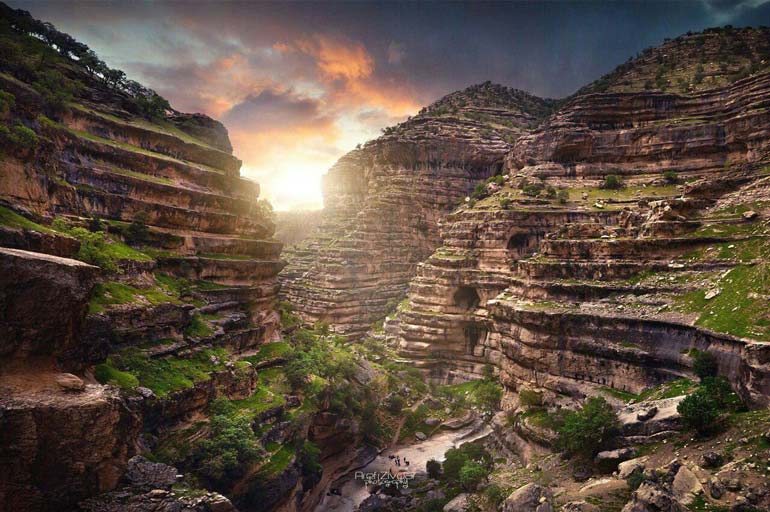
- Shiraz Canyon: This spectacular natural wonder features rocky formations and lush vegetation. Its unique stepped structure resembles the Grand Canyon and Valley of the Kings.
- Lili Canyon: This hidden gem offers dramatic scenery and a challenging trekking experience. The canyon’s walls, carved by water over millennia, create a narrow passage with slippery sections.
- Azna Snow Tunnel: This 800-meter-long tunnel, naturally formed by accumulated snow and ice, provides a cool and refreshing experience year-round.
- Bishe Waterfall: Cascading down from amidst short trees and onto rocky cliffs, Bishe Waterfall is a picturesque sight in the village of Bisheh. The surrounding lush greenery and cool climate enhance the waterfall’s charm.
- Kalmakareh Cave: Dating back to around 2700 years ago, this cave is believed to have been a treasury for Sassanian kings. Some also suggest it belongs to the Neo-Elamite period, making it a potential repository of ancient treasures.
Recreational Attractions in Lorestan
- Khorramabad City Roof: This recreational spot offers panoramic views of the city, especially at night. It is located on Mount Madbeh in the eastern part of Khorramabad.
- Chagha Hill: This hill in Borujerd provides scenic views of the city and offers various recreational activities, including a bird garden with 78 species, a lake, water sports, gazebos, sculptures, and playgrounds.
- Kiu Amusement Park: This amusement park in Khorramabad offers a variety of rides and attractions for both children and adults. For an indoor amusement park option, consider Ranginkaman.
- Makhmalkooh Tourism Village: This unique complex in Khorramabad blends tradition and modernity, offering modern suites and traditional houses. It features sports facilities, a health trail, horseback riding, gazebos, tents, fountains, ponds, and stunning mountain, forest, and river views.
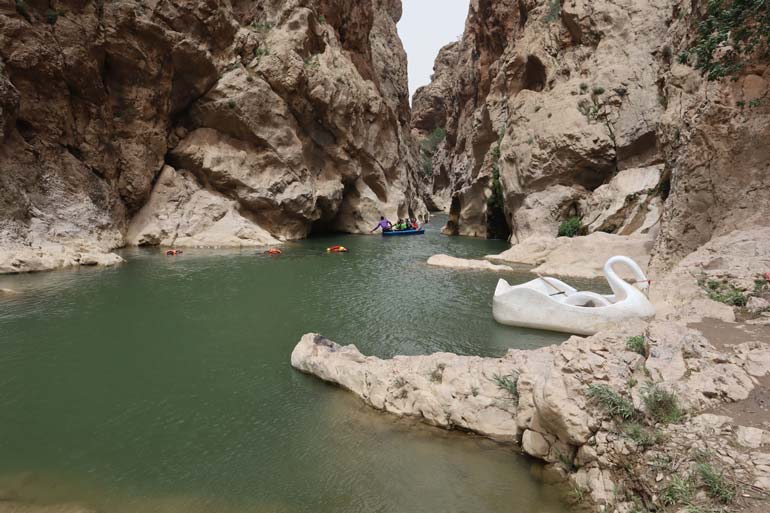
Markets and Shopping Centers in Lorestan
Lorestan offers a variety of bustling markets and shopping centers across its cities, reminiscent of the vibrant Grand Bazaar in Tehran.
Khorramabad Bazaar:
This historic bazaar, located adjacent to Falak-ol-Aflak Castle, is a must-visit for any traveler to Lorestan. Initially serving as a caravanserai for weary travelers, the bazaar transformed into a bustling marketplace over time.
Be’sat Commercial and Tourism Complex:
Situated in Khorramabad, Be’sat Complex is a prominent shopping and commercial hub. Featuring 130 shops offering a diverse range of goods, including handicrafts, clothing, cosmetics, jewelry, footwear, and more, it also houses four restaurants and cafes for a delightful dining experience.
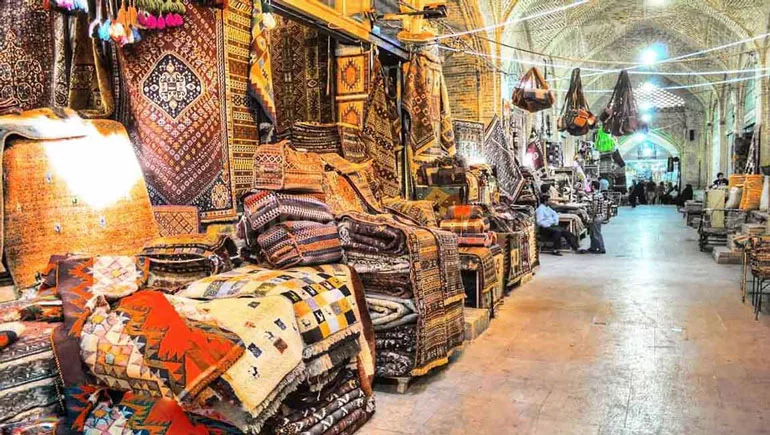
Borujerd Bazaar:
Immerse yourself in the rich history and vibrant atmosphere of Borujerd’s traditional bazaar. This bustling marketplace plays a significant role in inter-provincial trade, particularly between Lorestan, Hamedan, and Arak. During spring and summer, witness the colorful traditional attire of Lor and Bakhtiari nomads as they gather to make their purchases.
Souvenirs of Lorestan:
Beyond the delectable culinary delights and exquisite handicrafts, a journey to Lorestan leaves an indelible mark on one’s soul, carrying the essence of the region’s culture as a cherished souvenir.
Handicrafts of Lorestan:
Each region’s handicrafts reflect its unique artistry, ingenuity, and the availability of local materials. Here are some of the most notable handicrafts of Lorestan:
Nickel Silverware (Varsho Sazi):
A hallmark of Borujerd, nickel silver crafting, also known as Varsho Sazi, boasts a rich heritage dating back at least two centuries. Artisans meticulously shape this nickel-silver alloy, composed of 20% nickel, 35% zinc, and 45% copper, into exquisite trays, plates, charcoal samovars, tea caddies, cups, kohl containers, and an array of other items.
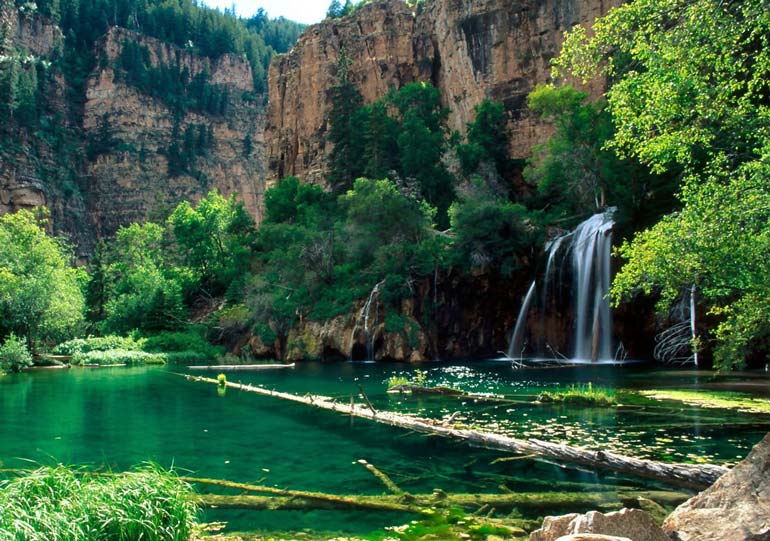
Jajim Weaving:
Predominantly practiced by Lor nomad women, jajim weaving is a seasonal craft undertaken during the less demanding summer and autumn months. Characterized by simple, freehand designs, jajims are crafted using natural wool and dyes, imparting a distinctive and captivating aesthetic. The tactile experience of running one’s hand over a jajim evokes the rhythmic weaving motions of the nomadic women.
Giveh Weaving:
Giveh making, the art of crafting traditional footwear, is an integral part of Lorestan’s handicrafts. While primarily undertaken by men, women may contribute to the upper shoemaking process. Renowned for its comfortable design, shaped sole, and natural materials, giveh is an ideal footwear choice for those with sensitive feet. However, finding artisans who still practice the traditional giveh-making techniques can be a challenge.
Culinary Delights of Lorestan: A Gastronomic Journey
Embark on a culinary adventure through Lorestan, a province renowned for its rich flavors and delectable dishes. Let your taste buds tantalize as you savor the authentic cuisine of this vibrant region.
Kaka: This traditional pastry, a staple across Iran, is a delightful treat. Simple ingredients like flour, saffron, powdered sugar, and ghee come together to create an irresistible indulgence. The key lies in using homemade ghee, imparting a unique flavor that will leave you craving more.
Borujerdi Koulouche: Resembling the Fuman Koulouche, this pastry from Borujerd is a delectable treat. Flour, ghee, and almond kernels are expertly combined to create a melt-in-your-mouth experience. Its convenient size and delightful taste make it a popular choice for gatherings.
Borujerdi Samanu: Traditionally prepared during the first days of the New Year, Samanu is a sweet delicacy that holds cultural significance. Borujerdi artisans possess a special skill in crafting this dish, resulting in a soft, smooth texture and a unique flavor. Samanu making is a prevalent livelihood in Lorestan, particularly in Borujerd.

Cultural Gems of Lorestan:
Lorestan boasts a rich and authentic culture, evident in its diverse dialects, vibrant festivals, and traditional attire.
New Year Celebrations: The arrival of spring is eagerly anticipated in Lorestan, with preparations commencing from early اسفند (Esfand) month. Homes are meticulously cleaned to welcome the auspicious Norouz (New Year). Unique customs include Jom’eh Akhar Saal (Last Friday of the Year), Beraat, Alfeh, Chaharshanbeh Suri (Persian New Year’s Eve), Nowruz, Haft Sin (Seven-Sins Table) with Borujerdi Samanu, Sizdeh Bedar (Nature Day), and New Year’s visits.
Music: Music is an integral part of Lorestan’s cultural tapestry, with melodies reflecting the joys of weddings and festivities, the solemnity of religious ceremonies, the lullabies of mothers, the mournful chants of Muharram commemorations, and the laments of funerals.
Traditional Attire: Men adorn themselves in shawls, setreh (special vests), felt hats, woolen cloaks (faraji or kapenak), and giveh footwear. Women grace themselves in loose, flowing dresses known as kelonjeh, adorned with embroidered or sequined vests and silk scarves.
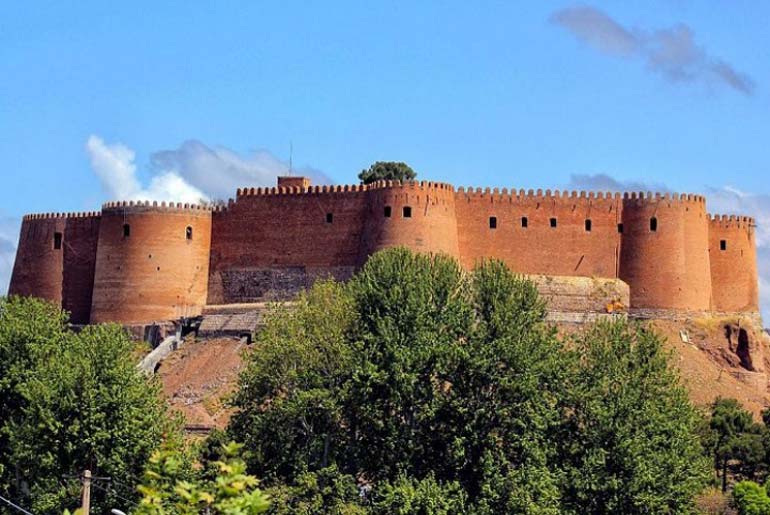
Flavors of Lorestan:
Lorestan’s culinary landscape is a treasure trove of flavors, each dish a testament to the region’s culinary heritage. Embark on a gastronomic journey with these delectable local specialties:
- Chezenk Ragho: This simple yet delightful bread is a symbol of hospitality, traditionally offered to welcome guests. The warm bread is drizzled with local ghee, creating a harmonious blend of textures and flavors.
- Doord Ash Shale Mash: If you’re an آش (ash) enthusiast, don’t miss Doord Ash Shale Mash. This hearty lentil stew, originating from Doord, is packed with legumes and infused with the enticing aroma of fried onions, mint, and savory broth.
- Khorramabad Shami Khoo: This dish is akin to shami, but with a unique twist – a delectable sauce. The sauce, crafted from pomegranate molasses, walnuts, and aromatic herbs, elevates the shami to new heights of flavor. Imagine biting into a fresh sangak bread filled with Shami Khoo and drizzled with the special sauce – a culinary experience like no other.
- Soghdo: This local delicacy resembles stuffed grape leaves, but with a twist – it’s made using sirab (tripe) and shirdan (sweetbread). The lamb tripe is meticulously cleaned and filled with a savory concoction, creating a nutrient-rich and flavorful dish.
- Khoreshe Gheylieh Tarsh: For those who relish tangy flavors, Khoreshe Gheylieh Tarsh is a must-try. The combination of chicken or meat, tamarind paste, and aromatic spices creates a symphony of flavors that will tantalize your taste buds.
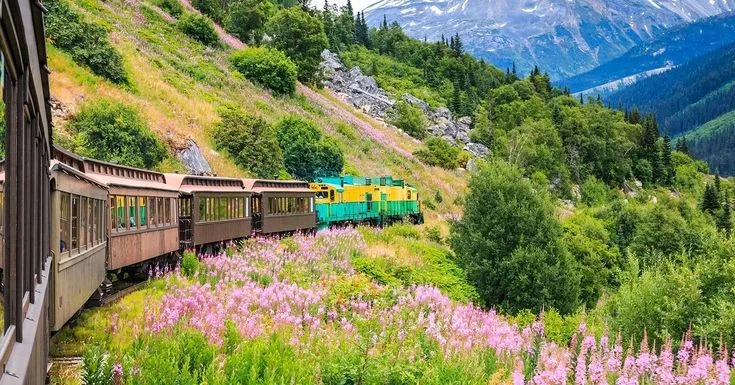
Renowned Restaurants of Lorestan: A Culinary Adventure
Embark on a culinary journey through Lorestan, where delectable flavors await. From traditional delicacies to modern delights, the province caters to every palate.
Za’faran Talaei Restaurant:
Located on Enqelab Street in Khorramabad, Za’faran Talaei Restaurant tantalizes taste buds with its exquisite dishes. Signature offerings include ostrich chenjeh and lamb shank chelo kabab.
Ranginkaman Revolving Restaurant:
Experience panoramic views of the city while indulging in culinary delights at Ranginkaman Revolving Restaurant. Perched atop a recreational complex, it offers breathtaking vistas, including the majestic Falak-ol-Aflak Castle.
Shamshad Namuneh Restaurant:
Embracing simplicity, Shamshad Namuneh Restaurant exudes a warm and inviting ambiance. The aroma of traditional stews and succulent kebabs fills the air, promising an authentic dining experience.
Hammam Ghap Restaurant:
Nestled within the historic Hammam Ghap complex, this restaurant offers a unique dining experience. Savor delectable international cuisine, including pizzas and crispy fried fillets. Indulge in hookah after your meal, if desired.
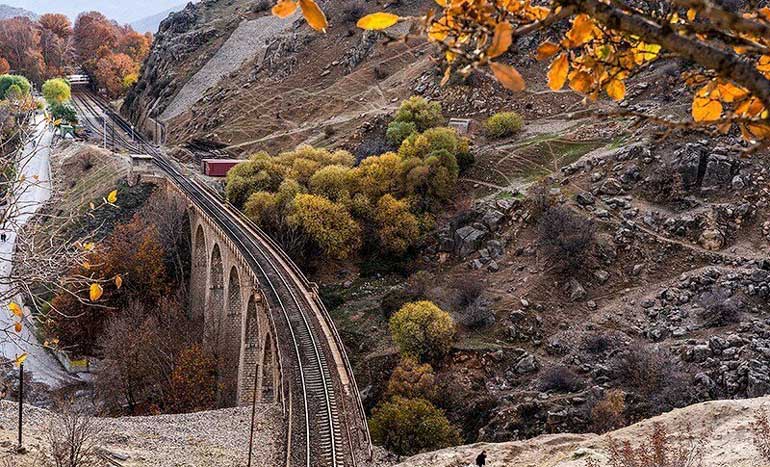
Pedideh Khorramabad Restaurant:
Pedideh Khorramabad Restaurant boasts a spacious venue that hosts both joyous weddings and somber condolences. Its skilled chefs prepare generous portions of delectable dishes at affordable prices.
Accommodations in Lorestan:
From luxurious hotels to rustic homestays, Lorestan offers a diverse range of accommodations to suit every traveler’s preference and budget.
Top Hotels in Lorestan:
- Ranginkaman Hotel:Located in Khorramabad, this 4-star hotel features a revolving restaurant and modern amenities.
Opens in a new window
iranparadise.com
Ranginkaman Hotel in Lorestan - Zagros Hotel:Situated in Borujerd, this 4-star hotel offers comfortable accommodations, a restaurant, and a coffee shop.
Opens in a new window
www.tripadvisor.com
Zagros Hotel in Lorestan - Jahanparvar Eligoodarz Hotel: This affordable hotel chain provides clean and comfortable accommodations, making it a budget-friendly option.
- Iran Zamin Hotel: Nestled in the heart of Doroud, this modern hotel offers a convenient location and a range of amenities.
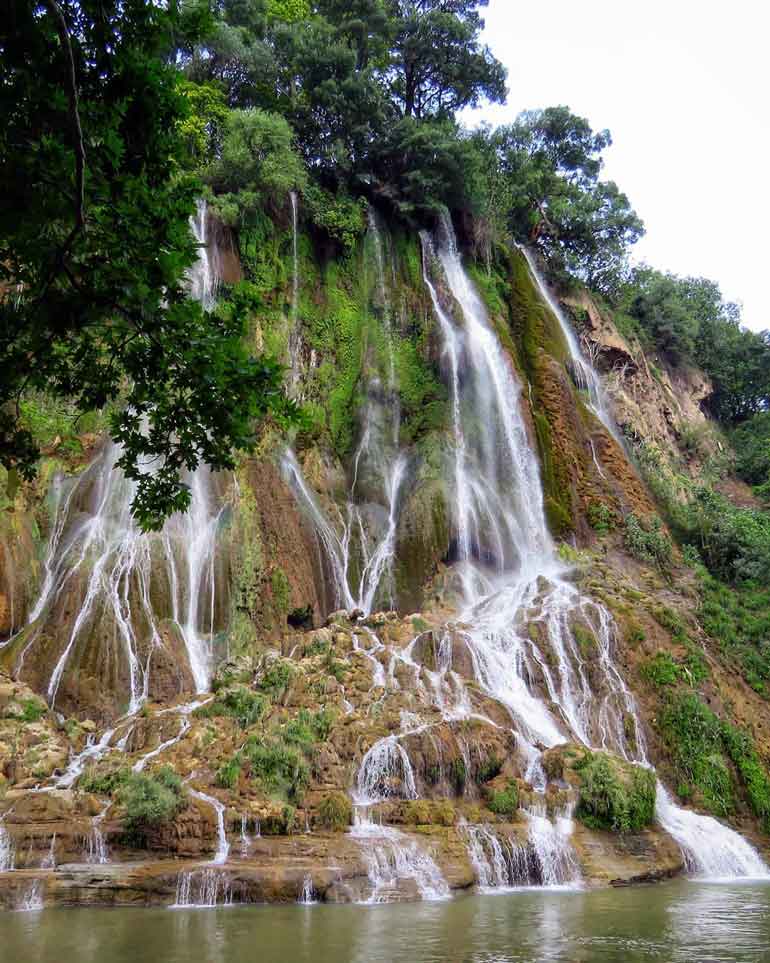
Ecotourism in Lorestan: Embracing Nature’s Embrace
Venture into the heart of Lorestan and immerse yourself in the rustic charm of its ecotourism offerings. Discover a harmonious blend of traditional hospitality, breathtaking landscapes, and authentic cultural experiences.
Ecolodges in Lorestan:
Kalder Ecolodge, Khorramabad: Nestled in the village of Ghaleh Sanghi, this ecolodge showcases the beauty of traditional mud-brick houses. Offering two-story accommodations with multiple units, it provides a glimpse into the region’s architectural heritage.
بلوط تاف کاسیت Ecolodge, Khorramabad:Situated along the Nozhian Waterfall Road, this ecolodge features charming suites adorned with colorful windows and modern amenities.
Bagh Golchehran Ecolodge, Borujerd: Immerse yourself in the serene ambiance of Bagh Golchehran Ecolodge, nestled amidst the picturesque Golchehran Garden in Borujerd. This exquisite ecolodge offers comfortable accommodations and a memorable stay.
Ritun Sam Ecolodge, Eligoodarz: Embrace the tranquility of nature at Ritun Sam Ecolodge, an ideal choice for those seeking a rustic yet modern retreat in the heart of Lorestan’s captivating landscapes. Located 20 kilometers along the Shulabad-Eligoodarz Road, it offers a unique ecotourism experience.
Shahid Rajaee Ecolodge, Poldokhtar: Experience the simplicity of rural life at Shahid Rajaee Ecolodge, a traditional village house in the village of Ghaleh Nasr, Poldokhtar. This ecolodge welcomes those seeking an authentic connection with the region’s rustic charm.
Nane Agha Ecolodge, Dorud: Step back in time at Nane Agha Ecolodge, a restored historical house in Dorud. Adorned with intricate window frames, plasterwork, and a fireplace, it offers a glimpse into the region’s rich heritage.
Villas and Camping in Lorestan:
Villas: For those seeking more spacious accommodations, villas and suites are available for rent across Lorestan. Choose from a variety of options based on amenities, accessibility, and nightly rates.
Camping: Adventure enthusiasts can immerse themselves in the wilderness by setting up camp in designated areas. For a unique experience, consider Alorzbom Ecotourism Camp in Eligoodarz, located 74 kilometers along the Eligoodarz-Shulabad Road. Experience the nomadic lifestyle in traditional tents.
Essential Tips for Travelers:
Pack Essentials: Ensure you carry necessary toiletries, medications, and any required items for your chosen activities.
Stock Up on Supplies: If venturing into remote areas, purchase ample food and water supplies at the nearest store.
Respect the Environment: Practice responsible ecotourism by minimizing waste and leaving no trace of your presence.
Carry Cash: Some attractions may not have card payment facilities, so carry sufficient cash for entrance fees and other expenses.
Book Accommodations in Advance: Secure your preferred ecolodges or villas to avoid disappointment, especially during peak seasons.
Embrace the rustic charm of Lorestan’s ecotourism offerings and create unforgettable memories amidst nature’s splendor.
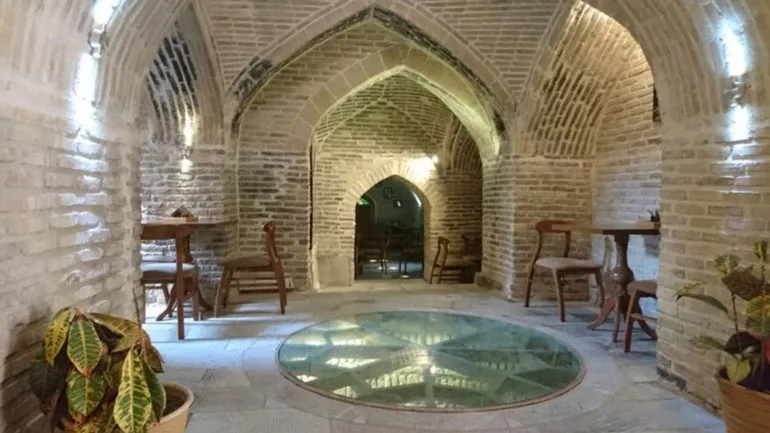
Conclusion:
Nestled amidst the Zagros Mountains, Lorestan unveils a captivating tapestry of natural wonders, historical treasures, and cultural gems. From its cascading waterfalls and verdant valleys to its ancient castles and vibrant traditions, Lorestan promises an unforgettable adventure for every traveler.
Unveiling Lorestan’s Treasures:
Natural Wonders:
Waterfalls: Marvel at the cascading splendor of Tareh, Kouh-e Sheir, and Polkhan waterfalls, each a testament to nature’s artistry.
Lakes: Serene tranquility awaits at Lake Kavir and Lake Gahar, where you can immerse yourself in the beauty of their tranquil waters.
Caves: Delve into the depths of the earth and explore the otherworldly beauty of Kogan Cave and Bisotun Cave, adorned with stalactites and stalagmites.
Historical Sites:
Falak-ol-Aflak Castle: Ascend to the majestic Falak-ol-Aflak Castle, a symbol of Lorestan’s rich history, and admire its grand architecture and panoramic views.
Bisotun Inscription: Decipher the ancient mysteries etched on the Bisotun Inscription, a UNESCO World Heritage Site that chronicles the reign of Darius the Great.
Khorramabad Bazaar: Immerse yourself in the vibrant atmosphere of Khorramabad Bazaar, where you can discover local handicrafts, spices, and delectable treats.
Cultural Gems:
Traditional Music: Savor the soulful melodies of Lorestan’s traditional music, performed on instruments like the tanbur and the kamancheh.
Nomad Life: Experience the authentic lifestyle of Lorestan’s nomads, known for their hospitality, craftsmanship, and deep connection to nature.
Local Cuisine: Tantalize your taste buds with the flavors of Lorestan’s cuisine, featuring hearty stews, flavorful kebabs, and freshly baked bread.
Planning Your Trip:
Transportation:
Air: Khorramabad Airport provides convenient air connections to major cities in Iran.
Road: Lorestan’s well-maintained roads offer scenic drives, allowing you to explore the province’s diverse landscapes.
Rail: Train services connect Lorestan to other parts of Iran, providing a comfortable and leisurely mode of transportation.
Accommodation:
Hotels: A variety of hotels cater to different budgets and preferences, from luxurious accommodations to budget-friendly options.
Ecolodges: Immerse yourself in nature’s embrace at ecolodges, offering a unique and sustainable travel experience.
Homestays: Experience authentic Lorestani hospitality by staying in homestays, providing a deeper connection to the local culture.
Essential Tips:
Best Time to Visit: Spring and autumn offer pleasant weather, while winter brings snow-capped mountains and cozy ambiance.
Language: Farsi is the primary language, with Luri dialects spoken in some regions.
Currency: The Iranian Rial (IRR) is the official currency.
Visa: Check visa requirements for your nationality.
Lorestan beckons with its captivating blend of natural wonders, historical treasures, and cultural gems. Embrace the warmth of its people, savor the flavors of its cuisine, and embark on an unforgettable journey of discovery. Let Lorestan’s rich tapestry weave its magic and create memories that will last a lifetime.


